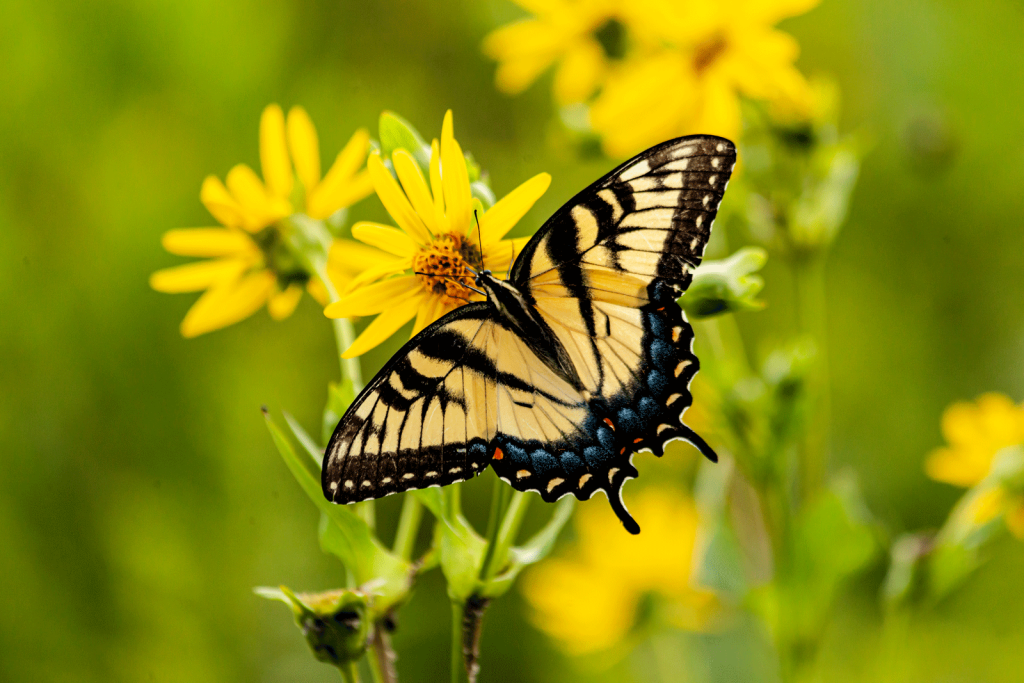
The role of CRP in mitigating climate change through carbon sequestration, habitat restoration, and sustainable land management.
As climate change continues to pose a serious threat to ecosystems, agriculture, and communities across the country, land-based solutions have become a critical part of the response. One powerful and often underappreciated tool in this fight is the Conservation Reserve Program (CRP). Through reestablishing native vegetation and improving land stewardship, CRP helps mitigate the effects of climate change while restoring valuable ecosystems.
At All Native Seed, we are proud to support CRP initiatives by providing high-quality native seed that promotes environmental resilience and sustainability. Here’s a look at how CRP programs contribute to climate change solutions, and how native plants are at the heart of it all.
Carbon Sequestration: Native Plants as Carbon Sinks
One of the most important ways CRP helps combat climate change is through carbon sequestration. When land is taken out of intensive agricultural production and restored with native grasses and forbs, it begins to function as a carbon sink, capturing and storing atmospheric carbon dioxide (CO₂) in both plant biomass and the soil.
- Deep-rooted native grasses like Big Bluestem, Indiangrass, and Switchgrass draw carbon deep into the soil, where it can remain stored for decades.
- Healthy CRP fields increase soil organic matter, which further improves carbon storage potential.
- By restoring millions of acres across the U.S., CRP contributes to removing significant amounts of CO₂ from the atmosphere.
Habitat Restoration and Biodiversity Resilience
CRP helps rebuild degraded ecosystems by restoring native plant communities that support pollinators, birds, and other wildlife. This biodiversity plays a key role in ecosystem resilience, allowing natural systems to better withstand and adapt to climate stressors such as heat, drought, and flooding.
- Pollinator habitats, including wildflowers like Milkweed and Coneflower, promote species diversity and ensure the health of both wild and agricultural plants.
- Native grasslands, once among the most endangered ecosystems in North America, are being revived through CRP efforts—strengthening ecosystem services and stability.
- Reestablishing habitats creates wildlife corridors that enable species migration and survival in changing climates.
Healthy, diverse ecosystems are more resistant to disease, invasive species, and extreme weather—making them vital in climate change adaptation.
Reducing Soil Erosion and Improving Water Retention
CRP plantings protect the land from erosion and help maintain soil integrity, which is increasingly important as climate change brings more intense rainfall and flooding events.
- Native grasses form dense root systems that anchor the soil, reducing runoff and keeping sediment and carbon in place.
- Restored CRP fields improve water infiltration, replenishing groundwater supplies and reducing strain on agricultural water resources.
- Wetland CRP practices, like CP23 (Wetland Restoration), help filter pollutants and buffer against floodwaters.
These water-related benefits support sustainable land management and help communities adapt to changing precipitation patterns and extreme weather events.
Reducing Agricultural Emissions
By removing marginal or environmentally sensitive land from crop production, CRP reduces the need for fertilizers, tilling, and heavy machinery, all of which contribute to greenhouse gas emissions.
- Less synthetic fertilizer use = lower nitrous oxide emissions, a potent greenhouse gas.
- Reduced tillage and fieldwork = less fossil fuel consumption and soil disturbance.
- Conversion of cropland to grassland = significant emissions reductions over time.
This shift not only helps the climate, but it also improves long-term soil health and productivity, providing benefits that extend well beyond the scope of the CRP contract.
A Scalable, Proven Climate Solution
With over 20 million acres enrolled nationwide, CRP has proven to be one of the most effective land-based conservation programs in the U.S. As the need for climate solutions that work at scale grows, CRP stands out as a model for balancing environmental stewardship with economic sustainability.
By restoring native vegetation, protecting soil and water, and capturing carbon, CRP fields act as climate buffers across a range of landscapes. And with emerging practices and more targeted seed mixes, CRP’s climate benefits will only continue to grow.
All Native Seed: Supporting Climate-Resilient Landscapes
At All Native Seed, we supply high-quality, NRCS-compliant native seed mixes that support the goals of CRP and climate-smart conservation. Our regionally adapted grasses and wildflowers are selected for performance, biodiversity, and resilience, helping landowners establish plantings that work with nature, not against it.
We also offer BOOST-treated seed, designed to improve germination and early vigor, giving your native plantings the best possible start in today’s challenging environmental conditions.
Planting for the Future
CRP is more than a conservation program, it’s a climate action tool that restores the land, supports biodiversity, and captures carbon where it matters most. By choosing native seed and participating in CRP programs, landowners have a powerful opportunity to make a lasting impact on the planet.
Ready to contribute to climate solutions on your land? Contact All Native Seed today to learn how we can help you design and implement a CRP project that benefits both your property and the environment for generations to come.
